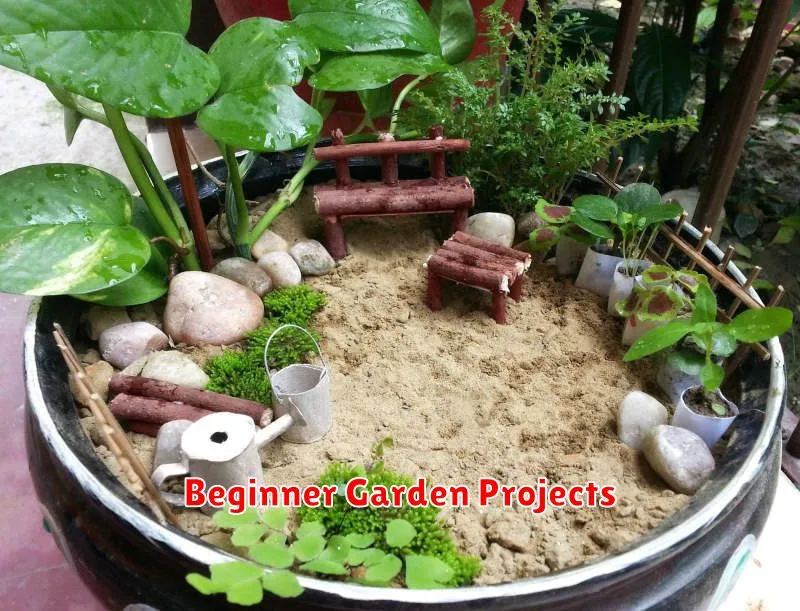Embark on a rewarding journey into the world of gardening with our comprehensive guide, 10 DIY Garden Projects for Beginners. This article provides easy-to-follow instructions for a variety of DIY garden projects perfect for novice gardeners, covering everything from creating a stunning vegetable garden to designing an enchanting flower bed. Learn how to cultivate your green thumb with these accessible and fulfilling beginner-friendly gardening projects, transforming your outdoor space into a flourishing oasis. Whether you’re looking to grow your own herbs, cultivate vibrant flowers, or simply enjoy the therapeutic process of gardening, this guide has something for you. Discover the joy of DIY gardening and unleash your inner horticulturalist!
Hand-Painted Plant Pots

Personalize your garden with hand-painted plant pots! This beginner-friendly project requires minimal supplies: terracotta pots, acrylic paints, and sealing spray. Clean your pots thoroughly and allow them to dry completely before beginning.
Let your creativity flow! Use stencils for precise designs or freehand paint floral patterns, geometric shapes, or abstract art. Consider using multiple colors and layering techniques for added depth and visual interest. Allow the paint to dry completely before applying a protective sealant.
Once sealed, your unique hand-painted pots are ready to house your favorite plants. This project is a fantastic way to add a touch of personal style to your garden while also being a rewarding and enjoyable DIY activity. The possibilities are truly endless!
DIY Vertical Planters
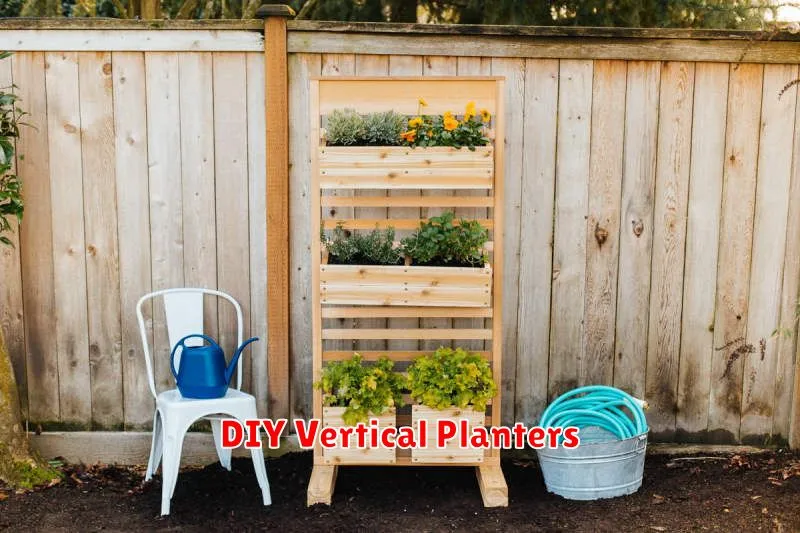
Vertical planters are a fantastic way to maximize space in smaller gardens or even on patios and balconies. They offer a visually appealing alternative to traditional gardening, allowing you to grow herbs, flowers, or vegetables upwards instead of outwards. Creating a vertical planter is a simple DIY project, even for beginners.
Several materials can be repurposed to make a vertical planter. Recycled pallets, for example, can be easily transformed into a rustic and charming planter by adding pockets of fabric or plastic containers. Alternatively, PVC pipes can be cut and arranged to create a modern and efficient vertical garden. The choice of material will largely depend on your personal style and the available space.
Before starting your project, carefully plan the design and size of your vertical planter based on the space available and the types of plants you intend to grow. Consider factors such as drainage and ease of access for watering and maintenance. With a little creativity and effort, you can easily create a beautiful and functional vertical planter to enhance your garden.
Garden Markers with Recycled Materials
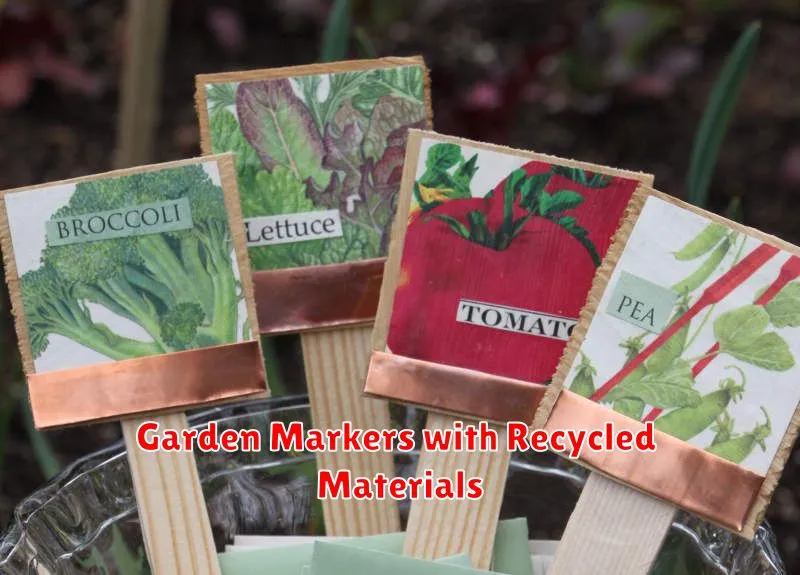
Creating garden markers from recycled materials is a simple and eco-friendly way to personalize your garden. Common materials such as old spoons, forks, bottle caps, or even broken pottery can be transformed into charming and unique markers. A little paint, a permanent marker, or even some decoupage can add personality and help identify your plants.
The process is generally straightforward. For example, clean and dry your chosen material. Then, write plant names directly onto a smooth surface like a bottle cap or use paint or a marker for more decorative options. Alternatively, attach small labels to more rustic materials. Consider adding embellishments like beads or small stones for a more decorative touch.
Benefits extend beyond the aesthetic. Using recycled materials reduces waste and allows you to express your creativity while making your garden more organized and visually appealing. This project requires minimal tools and materials, making it ideal for beginners.
Pallet Furniture for Patios
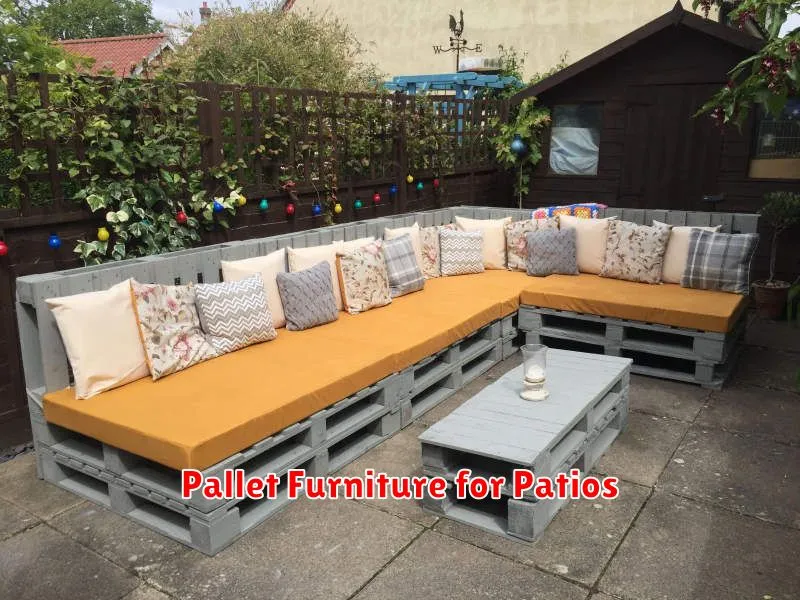
Creating pallet furniture is a beginner-friendly way to enhance your patio. Pallets, readily available and often free, offer a sustainable and inexpensive material for building various pieces. With a little sanding, cleaning, and some basic tools, you can transform them into stylish and functional additions to your outdoor space.
Simple projects include a pallet coffee table, requiring only basic assembly and potentially some staining or painting for added aesthetic appeal. A pallet bench is another achievable project, offering comfortable seating. Consider adding cushions for extra comfort and style.
Remember to always prioritize safety. Ensure palettes are free from splinters and treated appropriately for outdoor use. Properly securing all components is crucial for durability and preventing injury. With careful planning and execution, your DIY pallet patio furniture will provide years of enjoyment.
Hanging Terrariums for Small Spaces

Hanging terrariums offer a unique and stylish way to introduce greenery into even the smallest apartments or rooms. They are easy to create, requiring only a glass container (a repurposed jar works wonderfully), potting soil, and small, low-maintenance plants like succulents or air plants. The hanging feature maximizes vertical space, leaving your floor area free.
The process is straightforward. First, select a container with drainage holes. Then, add a layer of charcoal for drainage, followed by potting mix. Carefully plant your chosen plants, ensuring they are not overcrowded. Finally, hang your terrarium in a location with indirect sunlight to avoid overheating.
Maintenance is minimal. Regular misting will maintain humidity levels, and you will only need to water sparingly when the soil is dry to the touch. With careful selection of plants and proper placement, your hanging terrarium will thrive, adding a touch of nature to your living space without taking up valuable floor space.
DIY Compost Bins

Creating a compost bin is a rewarding and environmentally friendly project for beginner gardeners. Composting reduces waste and provides nutrient-rich soil amendment for your plants. Several simple designs are readily achievable, requiring minimal tools and materials.
A basic three-bin system involves three separate containers: one for fresh compostables (fruit and vegetable scraps, yard waste), one for actively decomposing material, and one for finished compost. You can construct these bins using readily available materials such as pallets, wire mesh, or even repurposed plastic containers. Ensure adequate airflow by leaving gaps between materials. Proper size and layering are key to successful composting.
Remember to maintain a balanced carbon-to-nitrogen ratio in your compost. Brown materials (dead leaves, twigs) provide carbon, while green materials (grass clippings, food scraps) provide nitrogen. Regularly turn the compost to aerate it and speed up decomposition. With a little patience, you’ll soon have your own supply of nutrient-rich compost to enrich your garden.
Simple Herb Gardens
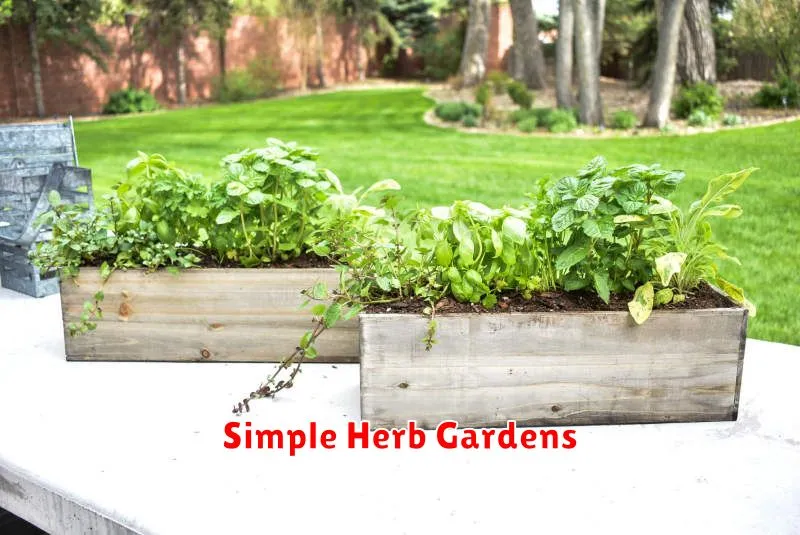
Creating a simple herb garden is an excellent beginner project. Ease of maintenance and versatility make herbs ideal for novice gardeners. Choose herbs like basil, mint, parsley, and chives, known for their adaptability to various conditions.
Container gardening offers a convenient method for beginners. Select pots with adequate drainage holes. Ensure the pots are appropriately sized for the chosen herbs, considering their mature size. Use well-draining potting mix and provide sufficient sunlight. Regular watering is crucial but avoid overwatering.
Harvesting herbs regularly encourages new growth and prevents them from becoming leggy. Proper harvesting techniques, such as pinching or snipping, will maintain the health of your herb garden. Enjoy the fresh flavor and aroma of homegrown herbs in your cooking.
Solar Mason Jar Lights
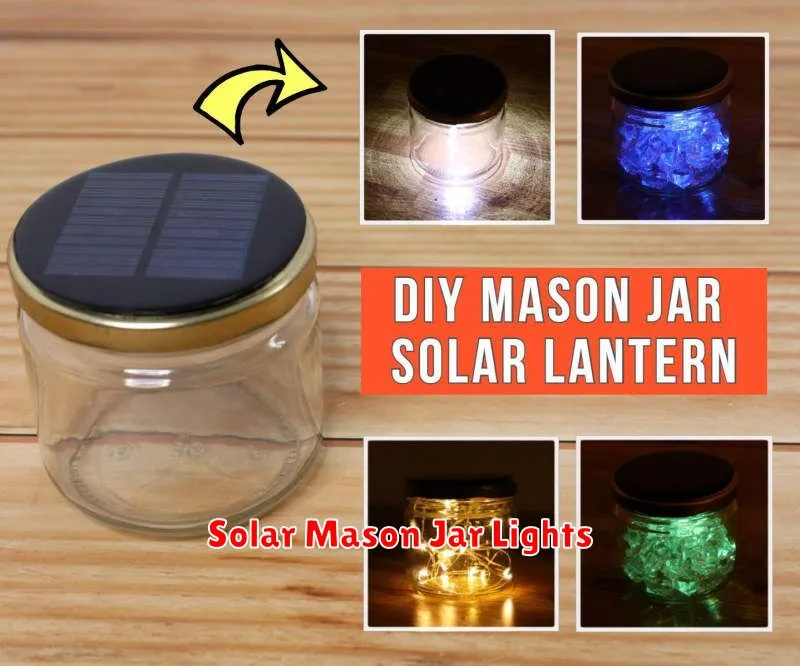
Creating solar mason jar lights is a simple yet charming DIY project perfect for beginners. This project requires minimal tools and materials, making it an accessible and enjoyable gardening endeavor. You’ll need clean mason jars, solar LED lights (easily found online or at craft stores), and potentially some decorative elements such as paint, ribbon, or lace, depending on your desired aesthetic.
The process is straightforward. Begin by carefully inserting the solar LED lights into the mason jars. Ensure the solar panel is positioned to receive ample sunlight. Next, personalize your lights by adding any decorative touches you desire. This step allows for significant creative freedom, enabling you to tailor the lights to your garden’s style.
Once complete, strategically place your solar mason jar lights throughout your garden. They offer a soft, ambient glow at night, creating a welcoming and magical atmosphere. Their sustainable nature, powered by the sun, adds an eco-friendly touch to your outdoor space, making them a delightful and practical addition to any beginner gardener’s project list.
Decorative Garden Borders
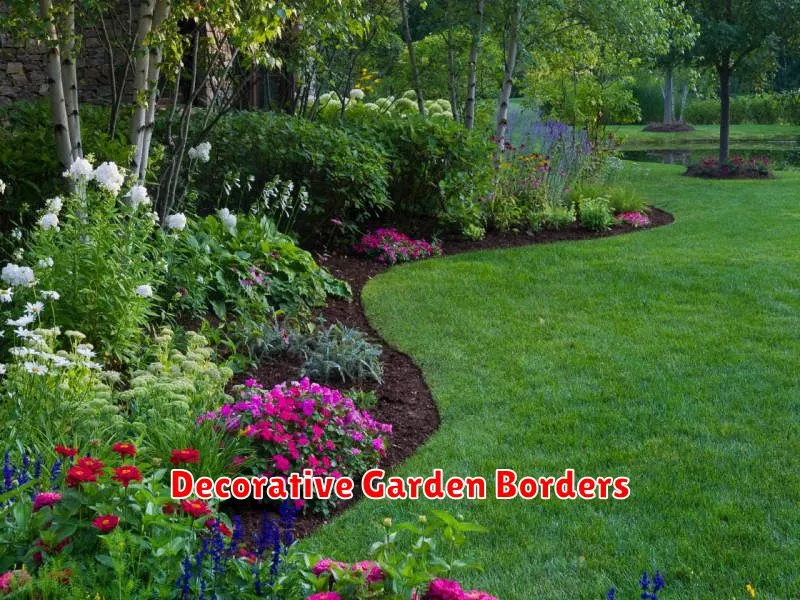
Creating decorative garden borders is a simple yet impactful DIY project for beginners. These borders define garden spaces, enhance aesthetics, and can even help control weeds. Numerous inexpensive and readily available materials can be used, making this a budget-friendly project.
Consider using readily available materials such as bricks, stones, or recycled materials like reclaimed wood or glass bottles to create unique borders. Proper planning, including measuring the area and selecting materials that complement your garden’s style, will contribute to a successful outcome. Remember to ensure proper drainage to prevent waterlogging.
Simple designs are often the most effective for beginners. A straight line or gently curving border is easy to achieve and visually appealing. For a more defined look, add a layer of mulch or gravel inside the border. The finished product will enhance the overall look of your garden while adding a touch of personal style.
Recycled Watering Cans for Decor
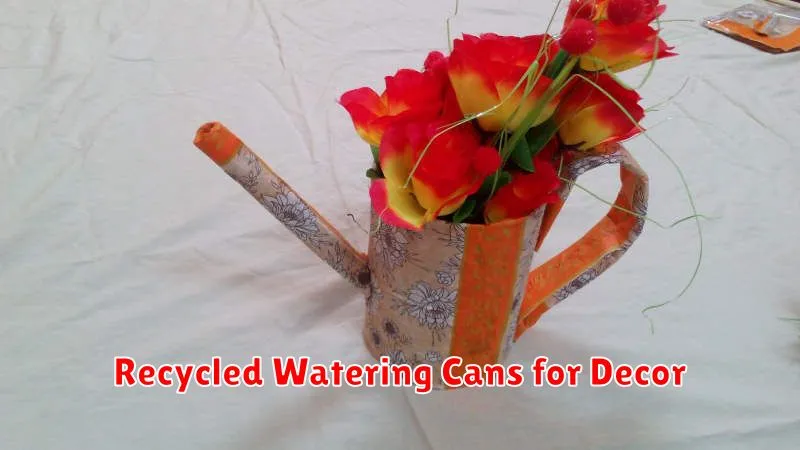
Give your old, discarded watering cans a new lease on life by transforming them into charming garden décor. This beginner-friendly project requires minimal tools and effort, making it perfect for those new to DIY gardening. Clean your cans thoroughly and allow them to dry completely.
Personalize your recycled watering cans with a variety of techniques. You can paint them with bright colors, add decorative stickers, or even create a rustic look with a distressed paint finish. Consider adding floral arrangements or small potted succulents for an added touch of elegance.
Once decorated, these upcycled watering cans can be used in several ways. Hang them on fences, place them amongst your plants, or use them as unique planters. The possibilities are endless, offering a personalized and eco-friendly addition to your garden’s aesthetic.

